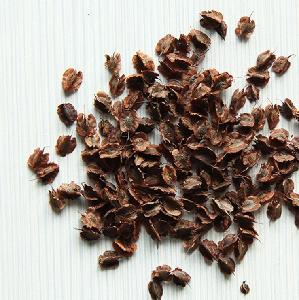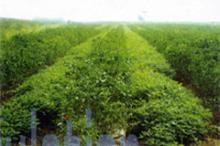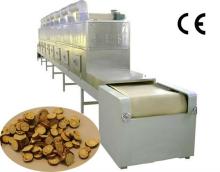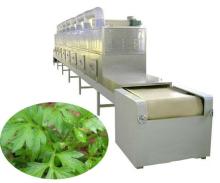
|

Makham Pom Overview
Makhom pom, also known as Emblica, Amlaki and amla, is one of the most often used herbs in the Asian healing system. Emblica exhibits strong antioxidant activity, immunomodulatory, anti-inflammatory, antiulcer, hepatoprotective, and anticancer actions.
Diabetic therapy: The antioxidant properties of amla extracts and their effects on the oxidative stress in streptozotocin-induced diabetes were examined in rats. Amla extracts showed strong free radical scavenging activity. Amla also showed strong inhibition of the production of advanced glycosylated end products. The elevated serum levels of 5-hydroxymethylfurfural, which is a glycosylated protein that is an indicator of oxidative stress, were significantly reduced dose-dependently in the diabetic rats fed amla. Similarly, the serum level of creatinine, yet another oxidative stress parameter, was also reduced. Furthermore, thiobarbituric acid-reactive substances levels were significantly reduced with amla, indicating a reduction in lipid peroxidation. In addition, the decreased albumin levels in the diabetic rats were significantly improved with amla. Amla also significantly improved the serum adiponectin levels. These results form the scientific basis supporting the efficacy of amla for relieving the oxidative stress and improving glucose metabolism in diabetes. [24]
Cardiac health: The tannoid principles of the fruits of Emblica officinalis have been reported to exhibit antioxidant activity in vitro and in vivo. In the present study, an emblicanin-A (37%) and -B (33%) enriched fraction of fresh juice of Emblica fruits (EOT) was investigated for antioxidant activity against ischemia-reperfusion (IRI)-induced oxidative stress in rat heart. IRI induced a significant decrease in the activities of cardiac superoxide dismutase, catalase and glutathione peroxidase, with a concomitant increase in lipid peroxidation. These IRI-induced effects were prevented by the administration of EOT (50 and 100 mg/kg body wt.) and VE (200 mg/kg body wt.) given orally twice daily for 14 days prior to the sacrifice of the animals and initiation of the perfusion experiments. The study confirms the antioxidant effect of E. officinalis and indicates that the fruits of the plant may have a cardioprotective effect. [25]
Lowers Cholesterol: The effect on total serum cholesterol and its lipoprotein fractions of supplementation of the diet with amla was studied in normal and hypercholesterolaemic men aged 35-55 years. The supplement was given for a period of 28 d in the raw form. Both normal and hypercholesterolaemic subjects showed a decrease in cholesterol levels. Two weeks after withdrawing the supplement, the total serum cholesterol levels of the hypercholesterolaemic subjects rose significantly almost to initial levels. [26]
Hepatoprotective: The effect of aqueous fruit extract of Phyllanthus emblica Linn was studied on type-II diabetes, triglycerides (TG) and liver-specific enzyme, alanine transaminase (ALT). Our study showed that aqueous fruit extract, in a dose of 200mg/kg body weight, significantly decreased the blood glucose level after its intra-peritoneal administration in alloxan-induced diabetic rats (p<0.05). Almost similar decreased in glucose level was also observed by chlorpropamide, a known antidiabetic drug in a dose of 84 mg/kg. The aqueous extract also induced hypotriglyceridemia by decreasing TG levels at 0, 1, 2 and 4 hours in diabetic rats (p<0.05). In addition, the extract was also found to improve liver function by normalizing the activity of liver-specific enzyme alanine transaminase (ALT). [27]
Gastrointestinal protection: Pretreatment with the butanol extract of the water fraction of Phyllanthus emblica fruits at the dose of 100 mg/kg body-weight, orally administered to rats for 10 consecutive days, was found to enhance secretion of gastric mucus and hexosamine (P<0.001) in the indomethacin induced ulceration of rats. The morphological observations also supported a protective effect of the stomach wall from lesion. The indomethacin treatment of the premedicated animals with the drug hardly affected either the malondialdehyde (MDA) or superoxide dismutase (SOD) level in gastric tissue while the ulcerative agent itself significantly enhanced both the levels. An antioxidant property appears to be predominantly responsible for this cytoprotective action of the drug. [28]
|
Diabetic therapy: The antioxidant properties of amla extracts and their effects on the oxidative stress in streptozotocin-induced diabetes were examined in rats. Amla extracts showed strong free radical scavenging activity. Amla also showed strong inhibition of the production of advanced glycosylated end products. The elevated serum levels of 5-hydroxymethylfurfural, which is a glycosylated protein that is an indicator of oxidative stress, were significantly reduced dose-dependently in the diabetic rats fed amla. Similarly, the serum level of creatinine, yet another oxidative stress parameter, was also reduced. Furthermore, thiobarbituric acid-reactive substances levels were significantly reduced with amla, indicating a reduction in lipid peroxidation. In addition, the decreased albumin levels in the diabetic rats were significantly improved with amla. Amla also significantly improved the serum adiponectin levels. These results form the scientific basis supporting the efficacy of amla for relieving the oxidative stress and improving glucose metabolism in diabetes. [24] Cardiac health: The tannoid principles of the fruits of Emblica officinalis have been reported to exhibit antioxidant activity in vitro and in vivo. In the present study, an emblicanin-A (37%) and -B (33%) enriched fraction of fresh juice of Emblica fruits (EOT) was investigated for antioxidant activity against ischemia-reperfusion (IRI)-induced oxidative stress in rat heart. IRI induced a significant decrease in the activities of cardiac superoxide dismutase, catalase and glutathione peroxidase, with a concomitant increase in lipid peroxidation. These IRI-induced effects were prevented by the administration of EOT (50 and 100 mg/kg body wt.) and VE (200 mg/kg body wt.) given orally twice daily for 14 days prior to the sacrifice of the animals and initiation of the perfusion experiments. The study confirms the antioxidant effect of E. officinalis and indicates that the fruits of the plant may have a cardioprotective effect. [25] Lowers Cholesterol: The effect on total serum cholesterol and its lipoprotein fractions of supplementation of the diet with amla was studied in normal and hypercholesterolaemic men aged 35-55 years. The supplement was given for a period of 28 d in the raw form. Both normal and hypercholesterolaemic subjects showed a decrease in cholesterol levels. Two weeks after withdrawing the supplement, the total serum cholesterol levels of the hypercholesterolaemic subjects rose significantly almost to initial levels. [26] Hepatoprotective: The effect of aqueous fruit extract of Phyllanthus emblica Linn was studied on type-II diabetes, triglycerides (TG) and liver-specific enzyme, alanine transaminase (ALT). Our study showed that aqueous fruit extract, in a dose of 200mg/kg body weight, significantly decreased the blood glucose level after its intra-peritoneal administration in alloxan-induced diabetic rats (p<0.05). Almost similar decreased in glucose level was also observed by chlorpropamide, a known antidiabetic drug in a dose of 84 mg/kg. The aqueous extract also induced hypotriglyceridemia by decreasing TG levels at 0, 1, 2 and 4 hours in diabetic rats (p<0.05). In addition, the extract was also found to improve liver function by normalizing the activity of liver-specific enzyme alanine transaminase (ALT). [27] Gastrointestinal protection: Pretreatment with the butanol extract of the water fraction of Phyllanthus emblica fruits at the dose of 100 mg/kg body-weight, orally administered to rats for 10 consecutive days, was found to enhance secretion of gastric mucus and hexosamine (P<0.001) in the indomethacin induced ulceration of rats. The morphological observations also supported a protective effect of the stomach wall from lesion. The indomethacin treatment of the premedicated animals with the drug hardly affected either the malondialdehyde (MDA) or superoxide dismutase (SOD) level in gastric tissue while the ulcerative agent itself significantly enhanced both the levels. An antioxidant property appears to be predominantly responsible for this cytoprotective action of the drug. [28] |
Herbal Pagoda sells the finest wholesale herbal medicines, herbs,spices, teas, and coffees obtainable. Herbal Pagoda specializes in bulk orders of all types of herbs and spices, as well as, oriental(Thai)Teas, and Arabica & Robusta Coffees.
Herbal Pagoda is located in Bangkok, Thailand and can deliver bulk purchases worldwide.
more

|

|

|

|

|

|

|

|

|

|

|

|